Pavilions for Okana
Abstract
Landscape to Roofscape shows the development of a flourishing community centre, located in the centre of the small village Okana in West Kenia. The feasibility and potential of the student project triggered the design for a sustainable and innovative pavilion to grow far beyond a theoretical level. The design is based on field research on cultural patterns and local architecture, in which interviews, sketches, literature research, and the work in 1:1 scale models were used as data source. Directly after graduation, the students managed to construct the project together with local builders and an international group of volunteers in just four months. Within less than two years from initial idea to finished construction, the design fulfils its goals towards creating architecture with a strong societal impact on poorer parts of the world.
What if students were able to make a change for poorer regions of the world with a small-scale intervention in architecture?
This question was challenged by two students by setting up their own Design-Build-Project and designing a prototypical pavilion structure for flexible use in East Africa. With the vision to show the feasibility and potential of the sustainable and innovative pavilion, the students Laura Katharina Strähle and Ellen Rouwendal designed and built a community centre out of six pavilions in the rural village in Okana in West-Kenya.
The research of building techniques, local cultural and construction patterns resulted in the reinterpretation of traditional patterns of inhabitation and the final design. Acquiring funding, managing the follow-up five-month construction phase and having the project leadership on site formed part of the students’ challenge to explore the potentials of a Design-Build-approach on academic level.
The design for the pavilion structure in Okana is inspired by the local Acacia Tree. Under the trees, people like to gather for being protected from the sun and the rain. By modifying the principle for a reciprocal roof by Leonardo da Vinci, the culture of the community is translated into an architectural roofscape resulting in a prototype building principle. The main structure is made of bamboo creating a 64m2 column free space underneath. The shape of the roof, the open courtyard and the permeable walls provide optimal water catchment and a constant breeze inside.
Simplicity, low-tech design solutions and an understandable design process are the most significant aspects to communicate and realize the project successfully with the local inhabitants, local workers and international students.
Within less than two years from initial idea to finished construction, the students proofed that the design fulfils its goals towards creating architecture with a strong societal impact on poorer parts of the world.
The project was awarded the 1st prize of the Dutch National Archiprix 2017 and selected amongst the 34 worldwide best Design-Build Projects 2017.
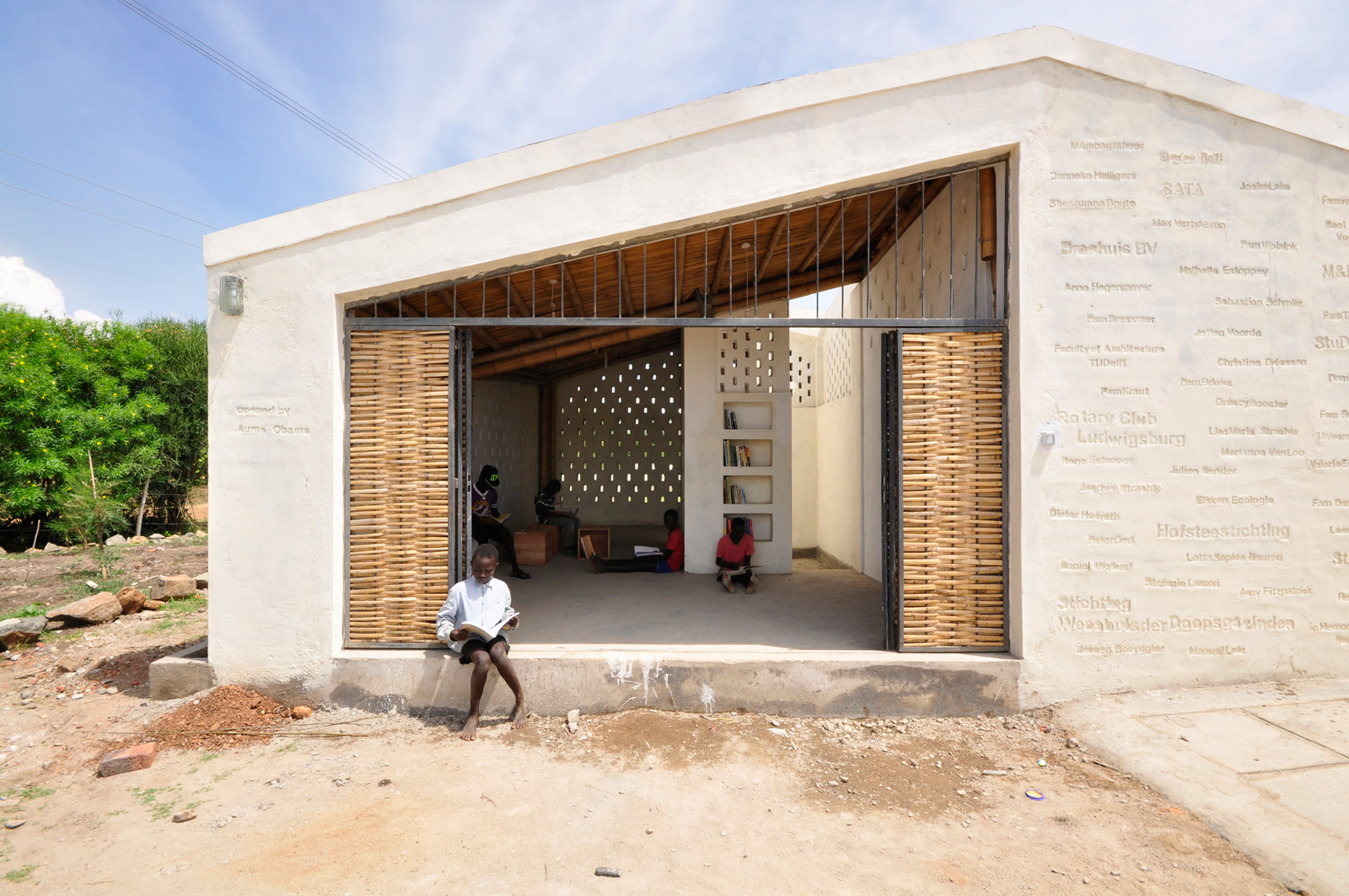
Figure 1: Entrance library.
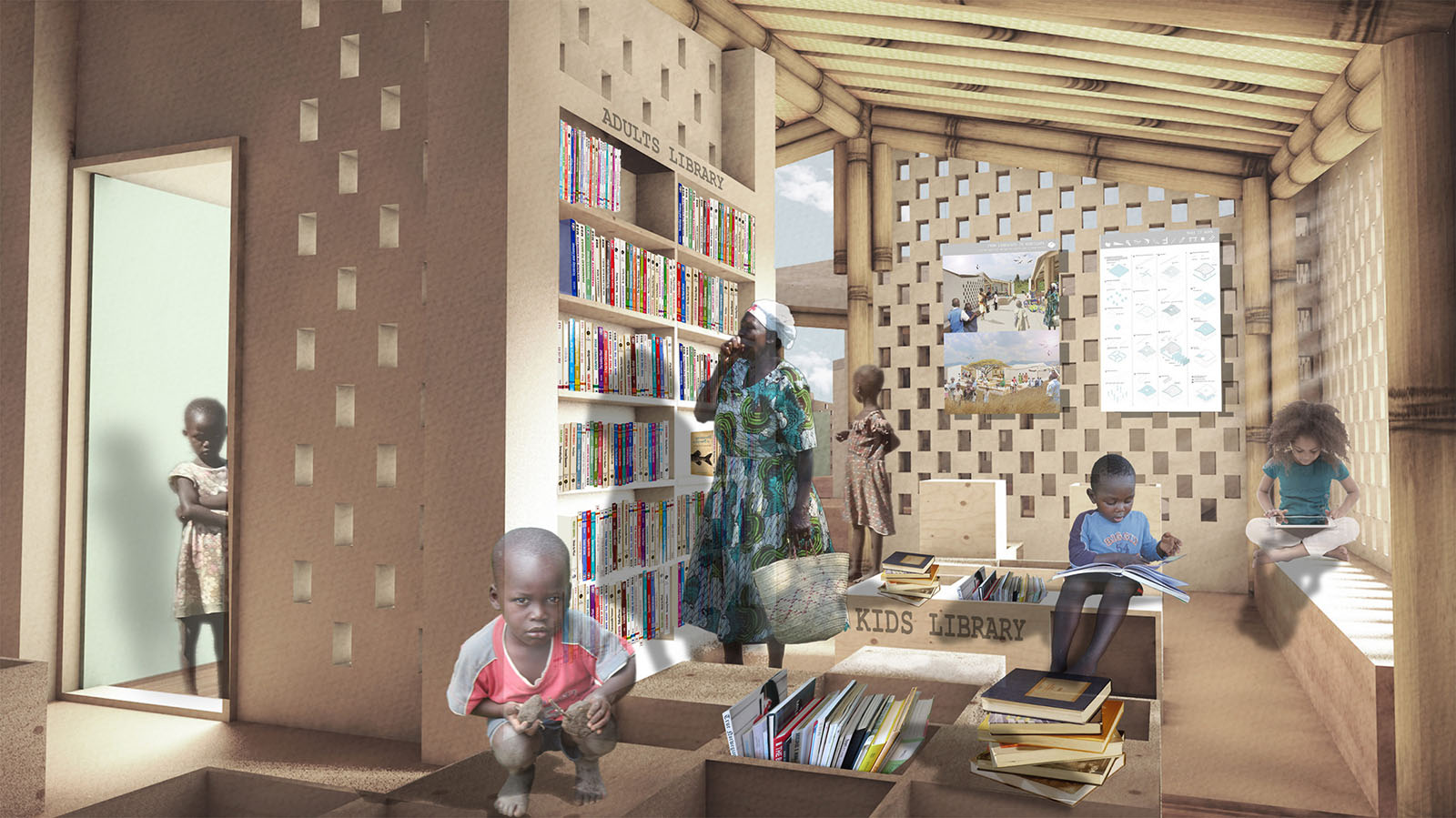
Figure 2: Impression library.
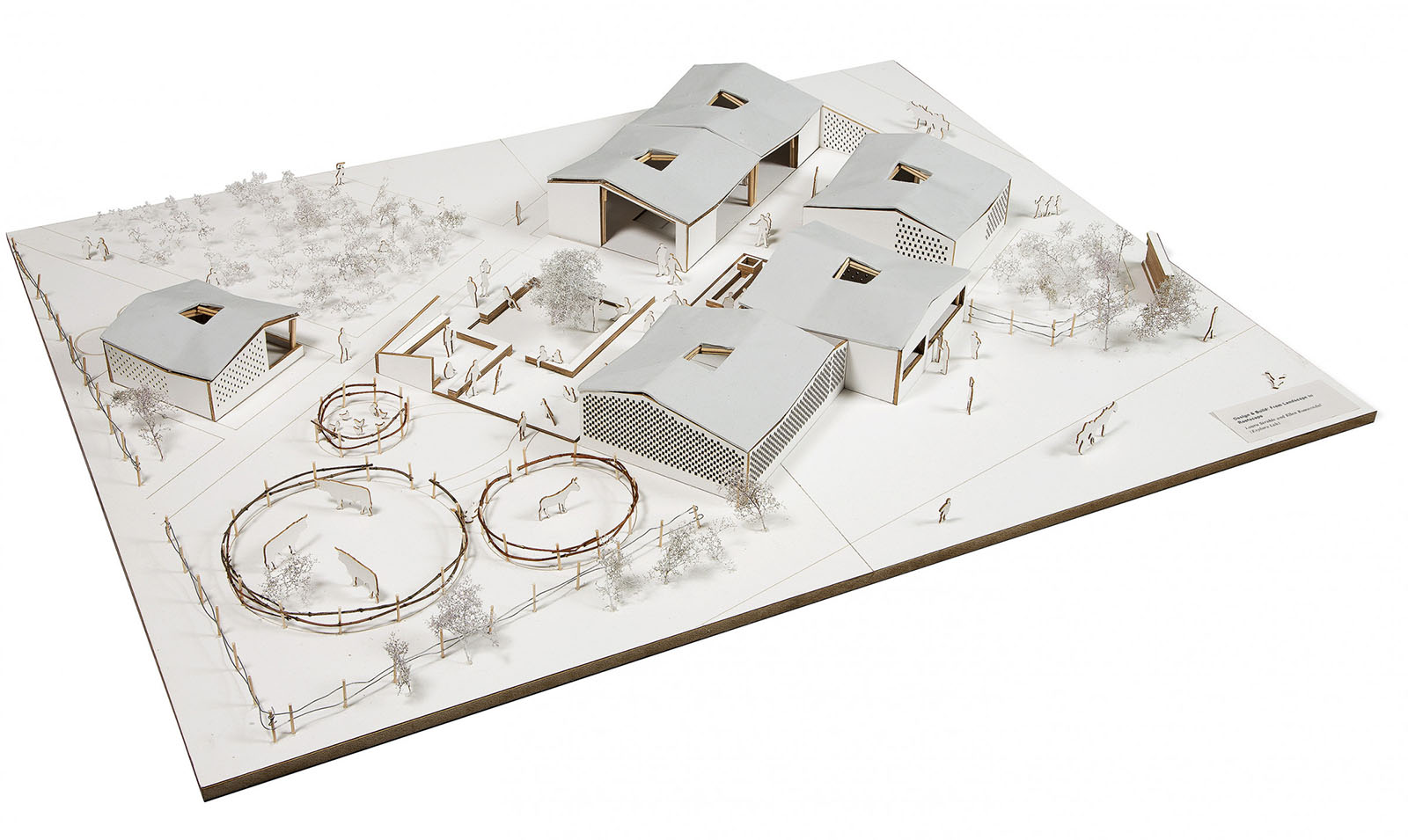
Figure 3: Community Centre Okana.
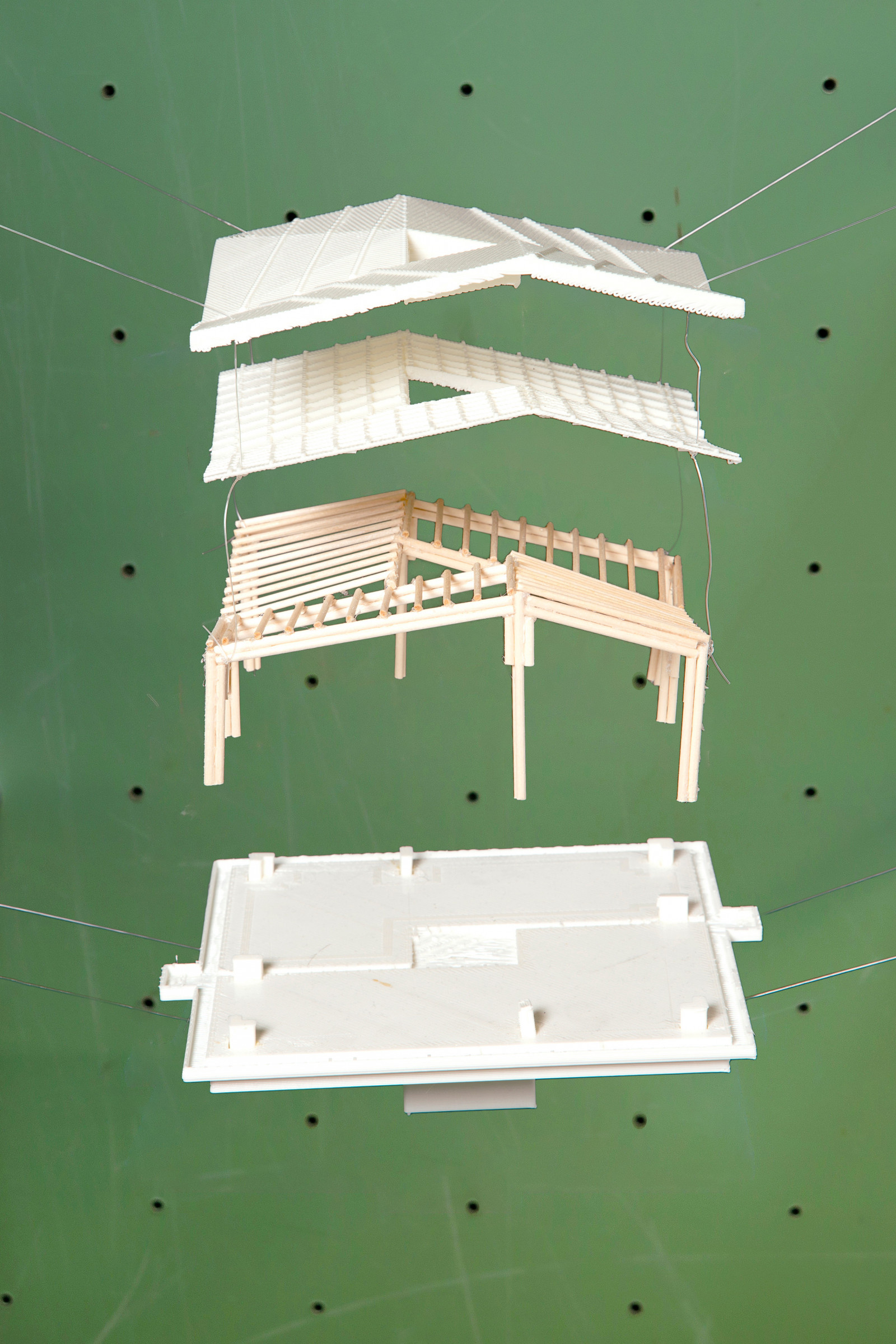
Figure 4: Design for the pavilion structure.
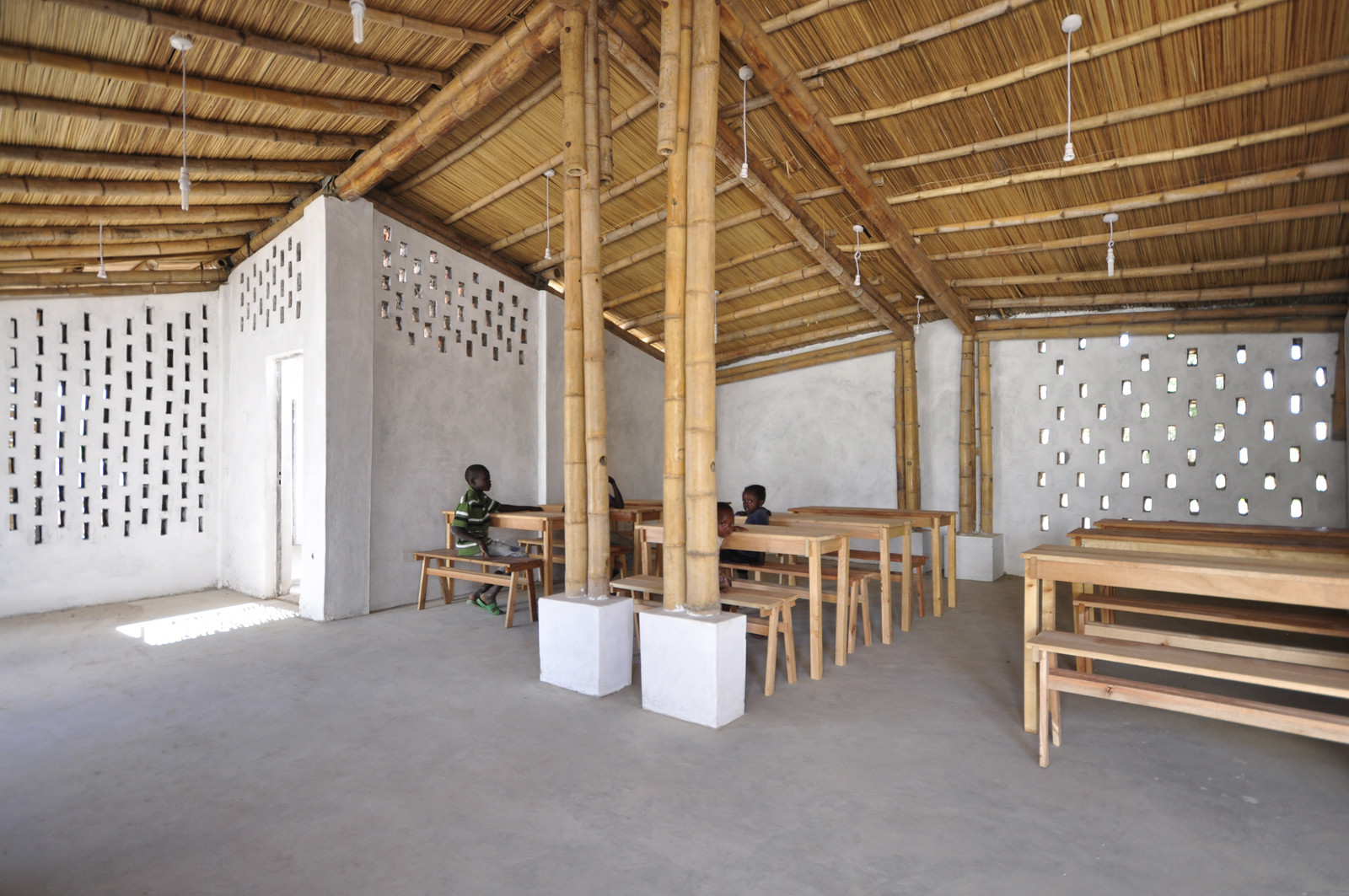
Figure 5: ICT room for classes and training.